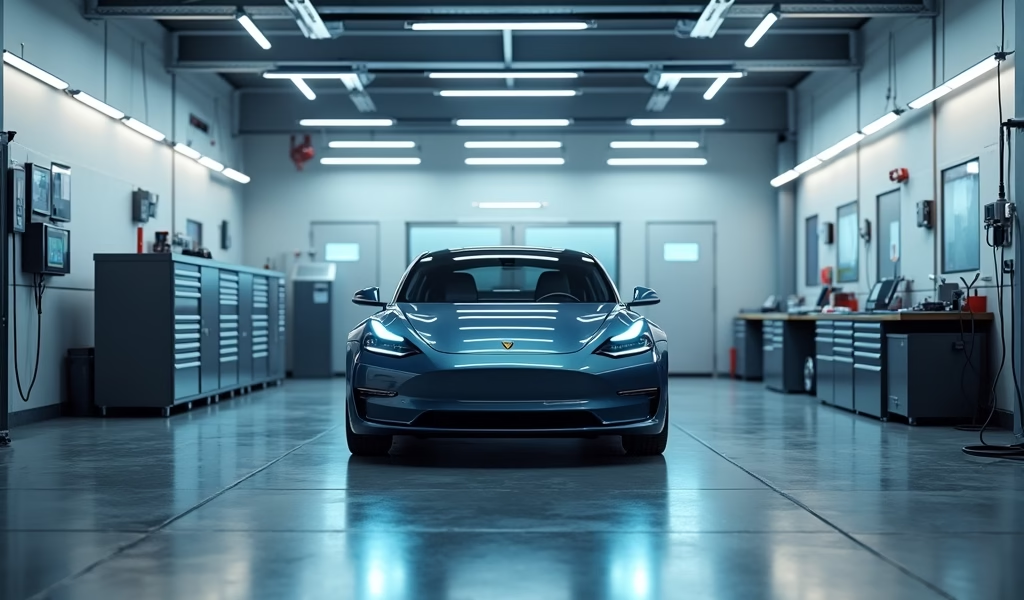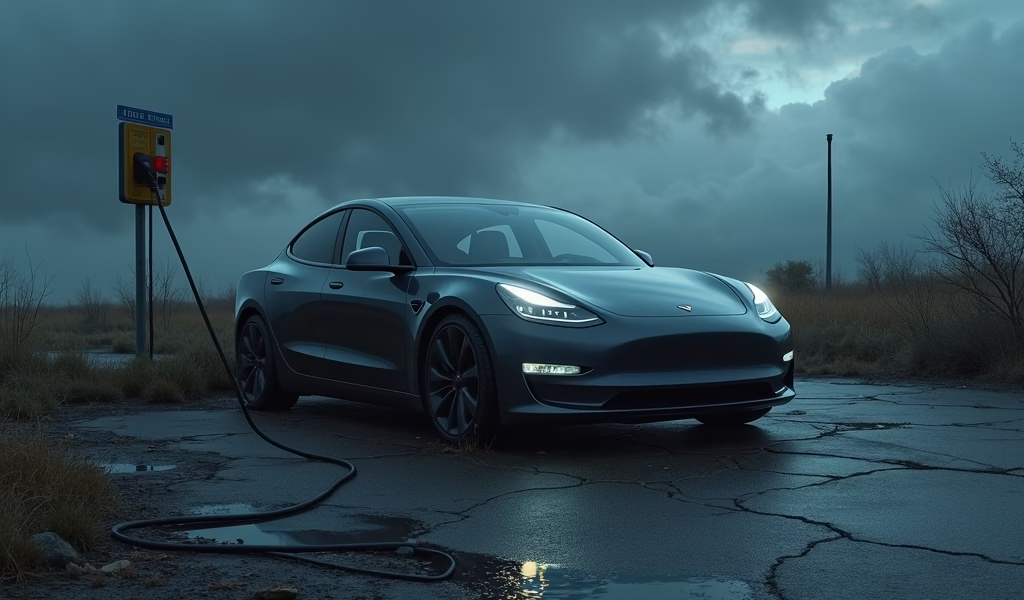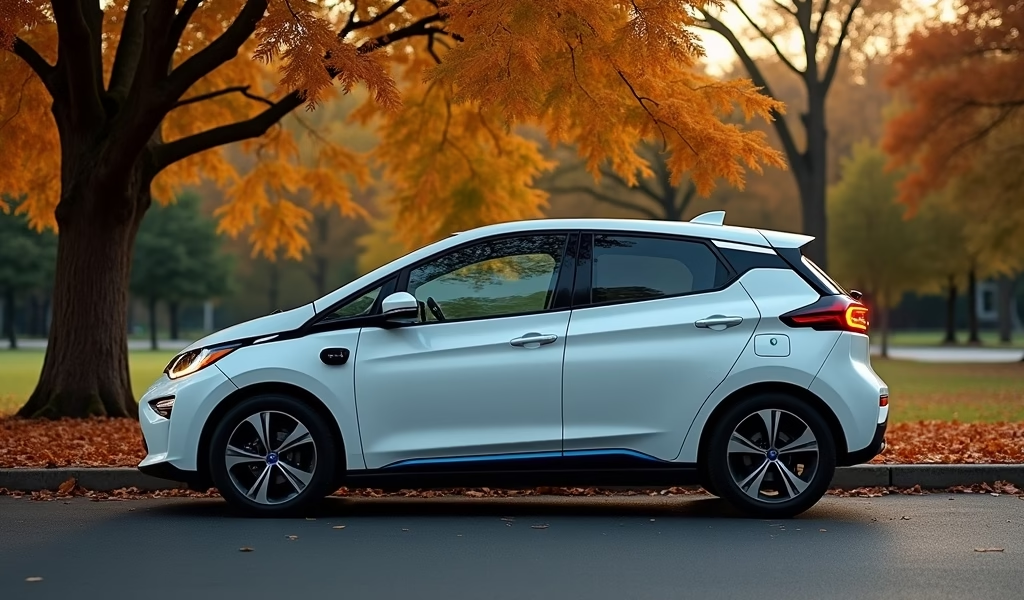Overview
This article examines the pros and cons of electric vehicles, highlighting environmental benefits, economic advantages, and performance capabilities while acknowledging challenges including range limitations, charging infrastructure gaps, higher initial costs, and battery concerns. It concludes that the suitability of EVs depends on individual driving patterns, access to charging, and budget considerations, with technological advancements continuously addressing current limitations.
Table of Contents
- Introduction to Electric Cars
- Advantages of Electric Cars
- Disadvantages of Electric Cars
- The Future of Electric Vehicles
- Is an Electric Car Right for You?
- Frequently Asked Questions
Introduction to Electric Cars
The automotive world is experiencing a quiet revolution. Electric vehicles (EVs) have transformed from futuristic concepts to everyday realities on our streets and highways. As a mechanic who’s worked on everything from vintage carburetors to cutting-edge EV systems, I’ve had a front-row seat to this remarkable shift.
Understanding the advantages and disadvantages of electric cars isn’t just important for the environmentally conscious—it’s essential knowledge for anyone considering their next vehicle purchase. The landscape is changing rapidly, with new models, improved technology, and expanding infrastructure reshaping what we thought we knew about EVs just a few years ago.
Whether you’re drawn to the environmental benefits, curious about the performance capabilities, or simply wondering if an electric car makes financial sense for your situation, this guide aims to give you the unvarnished truth about life with an electric vehicle. Let’s dive under the hood of the EV revolution together.
Advantages of Electric Cars

Environmental Benefits
The most obvious advantage of electric vehicles is their environmental impact—or rather, their lack of it. Unlike conventional vehicles that pump out a cocktail of emissions with every mile, EVs produce zero tailpipe emissions. That’s not just good news for polar bears; it makes a tangible difference in urban air quality where millions breathe easier when fewer pollutants cloud the air.
Even when considering the entire lifecycle—from manufacturing to disposal—research from the EPA confirms that electric vehicles typically generate fewer lifetime emissions than traditional vehicles. This advantage grows even stronger when the electricity comes from renewable sources like solar or wind.
Electric vehicles also contribute to quieter communities. Without the constant rumble of combustion engines, neighborhoods become more peaceful places to live. This reduction in noise pollution represents an often-overlooked environmental benefit that improves quality of life, especially in dense urban areas.
Economic Advantages
While sticker shock is real with many electric models, the financial picture brightens considerably when you look at the total cost of ownership. As someone who’s repaired both types of vehicles, I can tell you firsthand: electric cars are mechanical simplicity incarnate.
Consider what you won’t be paying for:
- Oil changes every 3,000-5,000 miles
- Transmission fluid services
- Timing belt replacements
- Exhaust system repairs
- Fuel system maintenance
With fewer moving parts and no complicated fuel combustion process, maintenance costs plummet. Most EV owners report spending only on tires, cabin air filters, and wiper blades for the first 100,000 miles—a far cry from the regular service intervals gas cars require.
The fuel savings are equally impressive. Depending on your local electricity rates, charging an EV typically costs 3-5 cents per mile, compared to 10-15 cents per mile for gasoline vehicles. For a driver covering 15,000 miles annually, that’s a potential savings of over $1,000 each year.
Many regions still offer financial incentives that can significantly reduce the purchase price. Between federal tax credits (up to $7,500 in the US), state rebates, utility discounts, and reduced registration fees, these incentives can slice thousands off the initial investment.
Performance Benefits
Forget what you thought you knew about electric cars being glorified golf carts. Modern EVs deliver performance that would make many sports cars blush. The secret lies in the fundamental nature of electric motors: they deliver 100% of their torque instantly.
This translates to exhilarating acceleration without the gear-shifting delays of traditional transmissions. Even modest electric family cars can surprise with their off-the-line punch, while high-performance models from Tesla, Porsche, and Lucid achieve supercar-level acceleration figures.
The driving experience is noticeably refined. Without engine vibration or transmission shifts, electric cars deliver a smooth, quiet ride that feels decidedly premium. Many drivers find it difficult to return to conventional vehicles after experiencing the seamless power delivery of an electric motor.
Handling benefits from the strategic placement of heavy battery packs. By mounting these low in the chassis, engineers create electric vehicles with exceptionally low centers of gravity. The result is impressive stability during cornering and emergency maneuvers, often outperforming similarly-sized gas vehicles.
Technological Advantages
Electric vehicles represent more than just a different power source—they’re rolling technology platforms that continue improving over time. Many EVs receive regular over-the-air software updates that can enhance performance, add features, or improve efficiency without a single visit to the service department.
The integration with smartphones and smart home systems allows for remote monitoring and control. Owners can pre-condition their vehicle’s cabin temperature while still plugged in (saving battery range), schedule charging during off-peak rate hours, and receive notifications about charging status or vehicle security.
Regenerative braking stands as one of the cleverest systems in modern vehicles. By recapturing energy during deceleration, these systems extend range while reducing brake wear. Many EV owners report brake pads lasting well beyond 100,000 miles thanks to the reduced reliance on friction braking.
The fascinating facts about electric cars extend to their adaptability. Unlike internal combustion engines with fixed performance parameters, electric powertrains can be updated and enhanced through software alone. This technological foundation means that, unlike traditional cars that gradually become outdated, electric vehicles can actually gain capabilities throughout their lifetime.
Disadvantages of Electric Cars

Range Limitations
Despite significant improvements, range anxiety remains a legitimate concern for many potential EV buyers. While many newer models offer 250+ miles of range, this still falls short of the 400-500 miles many gas vehicles can travel between fill-ups. This difference becomes particularly noticeable during long road trips or in regions with limited charging infrastructure.
Weather conditions significantly impact electric vehicle range in ways that surprise many new owners. Cold weather can reduce range by 20-30% due to battery chemistry limitations and the energy required for cabin heating. Hot weather presents its own challenges, with air conditioning drawing additional power from the battery.
The practical impact of range limitations extends beyond the numbers. It requires more careful trip planning, especially for longer journeys. The mental overhead of calculating remaining range against available charging stations represents a lifestyle adjustment that some drivers find inconvenient compared to the ubiquitous nature of gas stations.
For those living in apartments without dedicated charging or those who regularly drive long distances in rural areas, these disadvantages of electric cars can be particularly challenging to overcome. The technology continues improving rapidly, but range limitations remain a significant consideration for many potential buyers.
Charging Infrastructure Challenges
The charging experience differs substantially from the familiar five-minute gas station stop. Even with the fastest DC fast chargers, an 80% charge typically takes 20-40 minutes—fine for a scheduled meal break but potentially frustrating during unplanned charging needs.
Charging infrastructure remains unevenly distributed, creating “charging deserts” in many rural and less populated areas. Urban centers and major highway corridors generally offer adequate options, but venturing off these beaten paths can require careful planning and potentially limit travel flexibility.
Home charging, while convenient for those with access, presents obstacles for many potential EV owners. Apartment dwellers, those with street parking, or homeowners without garages face significant hurdles to overnight charging—often the most economical and convenient option.
The fragmented charging network compounds these challenges. Multiple charging networks with different payment systems, apps, and memberships create unnecessary complexity. Though industry standardization efforts are underway (particularly with Tesla opening its Supercharger network), the current landscape remains more complicated than the universal gas pump experience.
Higher Initial Costs
The upfront price premium for electric vehicles remains a significant barrier to wider adoption. Even with incentives, comparable electric models typically cost several thousand dollars more than their conventional counterparts. This price gap continues narrowing as production scales increase, but it remains a real consideration for budget-conscious shoppers.
While maintenance costs run lower, potential battery replacement represents a significant long-term expense. Modern EV batteries are designed for longevity, and most manufacturers offer 8-10 year warranties, but eventual replacement outside warranty could cost thousands. This uncertainty factors into resale values and long-term ownership calculations.
Insurance costs often run higher for electric vehicles due to several factors. Repair costs after accidents tend to be higher due to specialized components, and the technician expertise required for proper repairs remains less common than for conventional vehicles. These factors translate to insurance premiums that may offset some of the operational savings.
For many families, the economic equation eventually balances or tilts in favor of electric vehicles—but the higher entry point creates a very real financial hurdle that delays adoption despite the long-term advantages.
Battery Concerns
Manufacturing lithium-ion batteries remains an energy-intensive process with environmental impacts. While electric vehicles produce zero tailpipe emissions, the production phase—particularly battery manufacturing—generates more carbon emissions than producing conventional vehicles. This “carbon debt” is typically repaid within 6-18 months of driving, but it’s an important factor in the overall environmental calculation.
Ethical concerns surround some battery materials, particularly cobalt, which has been associated with problematic mining practices in some regions. The industry has responded with commitments to responsible sourcing and reduced cobalt content, but these issues remain relevant to environmentally and socially conscious consumers.
Battery recycling infrastructure, while developing rapidly, remains less mature than the established recycling processes for conventional vehicles. The environmental impact of end-of-life battery management depends significantly on recycling technologies that continue evolving alongside the growing EV market.
These factors don’t negate the environmental benefits of electric vehicles, but they do complicate the picture, requiring a more nuanced understanding of the complete lifecycle impact rather than focusing solely on the zero-emission operation.
The Future of Electric Vehicles
The trajectory of electric vehicle development points toward addressing today’s limitations. Battery technology advances rapidly, with solid-state batteries promising greater energy density, faster charging, and potentially lower costs within the next 5-10 years. These advancements could eliminate range anxiety while reducing both weight and cost.
Charging infrastructure expansion continues at an impressive pace. Major investments from governments, utilities, and private companies are creating more comprehensive networks. Charging speeds continue increasing, with some newer systems capable of adding 100+ miles of range in just 10 minutes—approaching the convenience of traditional refueling.
Perhaps most importantly, costs continue falling as production scales increase and battery technology matures. Some analysts predict price parity between comparable electric and conventional vehicles by mid-decade, potentially removing the most significant barrier to widespread adoption.
This pattern mirrors other technological transitions—from early adoption challenges to eventual mainstream acceptance as the technology matures and costs decrease. The question increasingly becomes not if electric vehicles will become dominant, but when the tipping point will arrive in different markets and vehicle segments.
Is an Electric Car Right for You?
Determining whether an electric vehicle suits your needs requires honest assessment of your driving patterns and living situation. If you have access to home charging, primarily drive shorter routes, and can manage the higher upfront cost, an electric vehicle likely makes both environmental and economic sense today.
For those regularly driving long distances in areas with limited charging infrastructure, lacking home charging options, or working with tighter budgets, conventional or hybrid vehicles might better suit your current needs. The rapid pace of development means waiting even a few years could bring options that address today’s limitations.
The transition to electric vehicles represents a significant shift in how we think about transportation. Like any major change, it brings both opportunities and challenges that each driver must evaluate based on their unique circumstances.
Electric vehicles aren’t just different in how they’re powered—they represent a fundamental reimagining of what a car can be. By understanding both the advantages and disadvantages, you can make an informed decision about whether now is the right time for you to join the electric revolution or wait for the next wave of improvements.
Frequently Asked Questions
What is the biggest advantage of electric cars?
The biggest advantage is their environmental impact, producing zero tailpipe emissions while typically generating lower lifetime carbon emissions than conventional vehicles. This benefit grows stronger when powered by renewable electricity sources.
Do electric cars really save money in the long run?
Yes, despite higher purchase prices, EVs typically save money through significantly lower fuel costs (50-70% less than gasoline) and reduced maintenance needs. Most owners see total cost advantages after 3-5 years of ownership.
How long does it take to charge an electric car?
Charging times vary widely based on the charger type and vehicle. Home Level 2 chargers typically provide a full charge overnight (6-10 hours), while DC fast chargers can add 80% charge in 20-40 minutes.
How long do electric car batteries last?
Modern EV batteries typically last 10-15 years or 150,000+ miles before significant degradation occurs. Most manufacturers offer 8-10 year warranties covering major capacity loss.
Are electric cars really better for the environment?
Yes, despite higher manufacturing emissions, studies consistently show EVs produce lower lifetime emissions than comparable gas vehicles. The environmental advantage increases as the electricity grid becomes greener and battery recycling improves.

